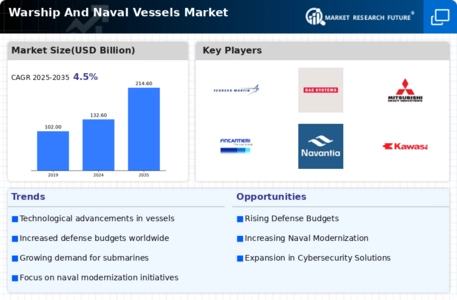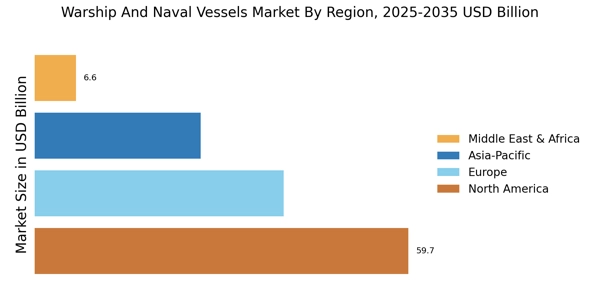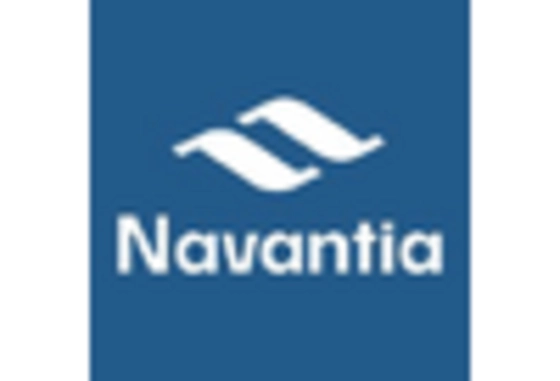Geopolitical Tensions
Geopolitical tensions are a critical driver of the Warship And Naval Vessels Market. Ongoing territorial disputes and military posturing among nations are prompting increased naval presence and capabilities. For instance, the South China Sea remains a focal point of contention, with multiple countries enhancing their naval fleets to assert their claims. This situation is likely to lead to a heightened demand for advanced warships and naval vessels, as nations seek to bolster their maritime security. Moreover, alliances and partnerships, such as those seen in NATO, are influencing procurement strategies, further impacting the Warship And Naval Vessels Market. The interplay of these geopolitical factors suggests a sustained growth potential for naval vessel manufacturers.
Rising Maritime Trade
The increasing volume of maritime trade is a significant driver for the Warship And Naval Vessels Market. As global trade continues to expand, the need for secure shipping routes becomes paramount. This has led to heightened investments in naval capabilities to protect trade interests. For example, the rise in piracy and maritime threats has prompted nations to enhance their naval presence in critical shipping lanes. The demand for naval vessels capable of ensuring maritime security is likely to grow, as countries seek to safeguard their economic interests. This trend suggests a robust outlook for the Warship And Naval Vessels Market, as nations prioritize the protection of their maritime trade routes.
Environmental Regulations
The Warship And Naval Vessels Market is increasingly influenced by environmental regulations aimed at reducing the ecological impact of naval operations. As nations commit to sustainability goals, there is a growing emphasis on developing eco-friendly vessels. This includes the adoption of alternative fuels and energy-efficient technologies in ship design. For instance, several navies are exploring hybrid propulsion systems to minimize emissions. The International Maritime Organization has set ambitious targets for reducing greenhouse gas emissions from shipping, which could drive innovation in the naval sector. Consequently, manufacturers that prioritize sustainable practices may gain a competitive edge in the Warship And Naval Vessels Market, aligning with global environmental objectives.
Technological Innovations
Technological advancements are reshaping the Warship And Naval Vessels Market, with innovations in automation, weaponry, and surveillance systems. The integration of artificial intelligence and machine learning into naval operations is becoming increasingly prevalent, enhancing decision-making processes and operational efficiency. For example, the development of unmanned surface vessels is gaining traction, with several navies exploring their potential for reconnaissance and combat roles. Additionally, the introduction of advanced radar and missile systems is expected to elevate the capabilities of modern warships. As these technologies continue to evolve, they are likely to drive the demand for new naval vessels, thereby influencing the Warship And Naval Vessels Market significantly.
Increasing Defense Budgets
The Warship And Naval Vessels Market is experiencing a notable surge in defense budgets across various nations. Governments are prioritizing military modernization, which includes the procurement of advanced naval vessels. For instance, countries such as India and Australia have announced substantial increases in their defense spending, with projections indicating a rise of over 10% in the next fiscal year. This trend is likely to bolster the demand for warships and naval vessels, as nations seek to enhance their maritime capabilities. Furthermore, the focus on national security and territorial integrity is driving investments in naval fleets, which could lead to a robust growth trajectory for the Warship And Naval Vessels Market in the coming years.


















Leave a Comment